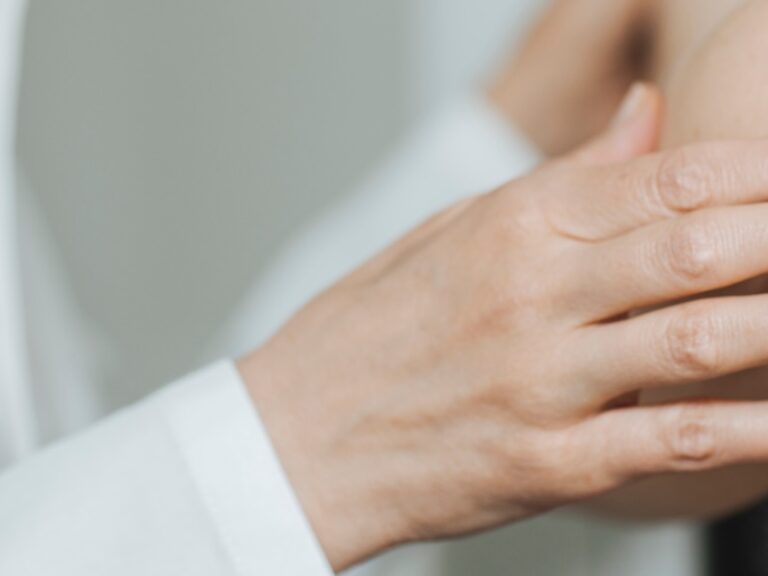Performing a breast self-exam (BSE) is a simple and important practice for women to become familiar with the normal look and feel of their breasts. A breast self-exam should be done regularly, typically once a month. Here’s a step-by-step guide on how to perform a breast self-exam:
1. Choose a Regular Time:
Perform the exam at the same time each month, ideally a few days after your menstrual period when your breasts are less likely to be tender or swollen. If you don’t have a regular menstrual cycle, choose a specific day each month.
2. Stand or Sit in Front of a Mirror:
Observe your breasts with your arms at your sides. Look for changes in size, shape, or symmetry. Note any changes in the skin, such as redness, dimpling, or changes in the nipple.
3. Raise Your Arms:
With your arms raised, check again for any changes in the appearance of your breasts. Look for changes in contour, swelling, or dimpling.
4. Inspect Your Breasts While Lying Down:
Lie down with a pillow under your right shoulder and your right arm behind your head. Using the pads of your three middle fingers on your left hand, check the entire right breast in a circular motion, starting from the outer edge and moving toward the nipple. Pay attention to any lumps, thickening, or changes in texture.
5. Use Different Pressure Levels:
Use three different levels of pressure while examining your breasts:
- Light pressure for the tissue closest to the skin.
- Medium pressure for the middle tissue.
- Firm pressure for the deep tissue close to the chest and ribs.
6. Repeat on the Other Side:
Repeat the process on your left breast, using your right hand.
7. Check Nipples:
Check your nipples for any discharge, lumps, or changes in shape.
8. Stand and Examine:
Finally, stand and examine your breasts with your arms raised. Repeat the visual inspection for any changes.
What to Look For:
- Changes in size or shape.
- Changes in skin texture (such as dimpling or puckering).
- Unexplained pain or tenderness.
- Lumps or thickening in the breast tissue.
- Changes in the appearance of the nipples.
If you notice any changes or abnormalities during a breast self-exam, it’s important to consult with a healthcare professional for further evaluation. Remember that breast self-exams are part of a comprehensive breast health routine, and regular clinical exams and mammograms are also important for early detection of breast cancer.
